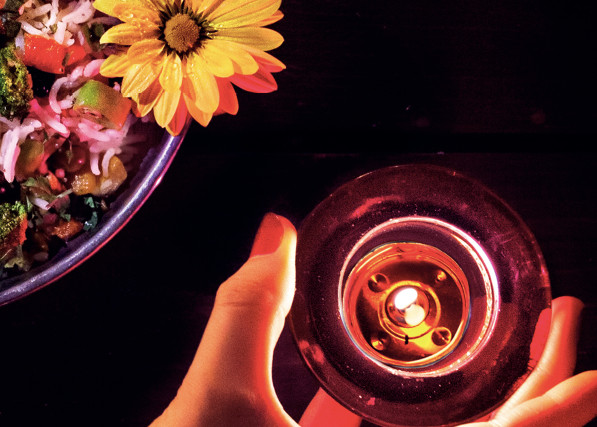Tonight, we wanted to share a sneak peek of this beautiful article written by our Tantra expert Dawn Cartwright. You can read the entire article in our new Spring issue, available in your local stockist or through subscription. Don’t forget to check out the details of Dawn’s special Positive Nights event with us on Wednesday the 25th of April too!

By Dawn Cartwright
“The Munis, girdled with the wind, wear garments soiled of yellow hue.
They, following the wind’s swift course, go where the Gods have gone before.”
Excerpt from Ke?in Hymn, 10.136 of the Rigveda, as translated by Ralph T. H. Griffith
Some of the earliest written evidence of Tantra appears in the RigVeda, the oldest of the Vedic Texts, dated roughly between 1100 and 500 B.C.E. The Ke?in Hymn, 10.136 of the Rigveda, describes dust-clad munis who cavorted with the wind. The muni, know for their pursuit of ecstasy, engaged in practices far outside the Brahmanical norm; defining evidence of an early Tantra tradition.
Defining Tantra
Tantra is a vast and controversial subject – to define it is a challenging task. Many elements of Tantra are also found in other Hindu and Vedic paths. Yet when we take the view that ecstasy creates the cosmos, Tantra is a path rich with possibility.
The origins of Tantra date back to the Upper Paleolithic Period, nearly 28,000 years ago. It is rooted in reverence for the microcosm-macrocosm view of fertility and the birth of the universe. The earliest traditions, much like the muni, were closely connected to nature. The Tantra sutras, revealing the secrets of existence, were songs sung by the wind, trees, rivers, oceans and mountains. These songs were translated by great mystics into Mantras, Yantras and Tantras.
The tradition we are most familiar with today is Neo-Tantra, the “new” or “revived” version of Tantra. Neo-Tantra is known for its embrace of sexuality: a perceptive that has drawn a great deal of controversy and skepticism. The Christian repressive attitudes prevalent even in India have enforced a separation between the spiritual and physical. Neo-Tantra weaves threads between the the sexual and the spiritual, the human and the divine, demonstrating, in very beautiful ways, that each exists in the other.
Scholars, Mystics & Lovers
“The Tantras most often tend to prefer more esoteric subjects: speculations on the nature of the Absolute, cosmogony, the creative nature of sound and word, micro-macrocosmic equivalence, the powers of speech, communication and handling of mantras, symbolic interpretations of words and names, construction of and initiation into mandalas and worship of deities therein.”
~Teun Goudriaan, History of Indian Literature Volume II
To explore Tantra is to experience a mystery that constantly unfolds without end. To understand Neo-Tantra and the ways this new tradition is complimentary to the classical traditions, it’s helpful to understand three perspectives: the scholarly, the classical and the new.
________________________
You can read the full article by picking up a copy of our Spring issue or subscribing today. Dawn will be a special guest at Positive Nights on Wednesday the 25th of April, from 7.30 to 9.30p.m. at Powerscourt Theatre, Dublin 2. The theme of her event is “Bringing Dating Back.” She will talk about how the sacred energy of ancient Tantric rituals called the Pancha Upacaras can be used to inspire greater devotion and intimacy in our modern-day dating lives. You can learn more about the event on our website, Facebook or Meetup, and book your tickets at this Eventbrite link.


